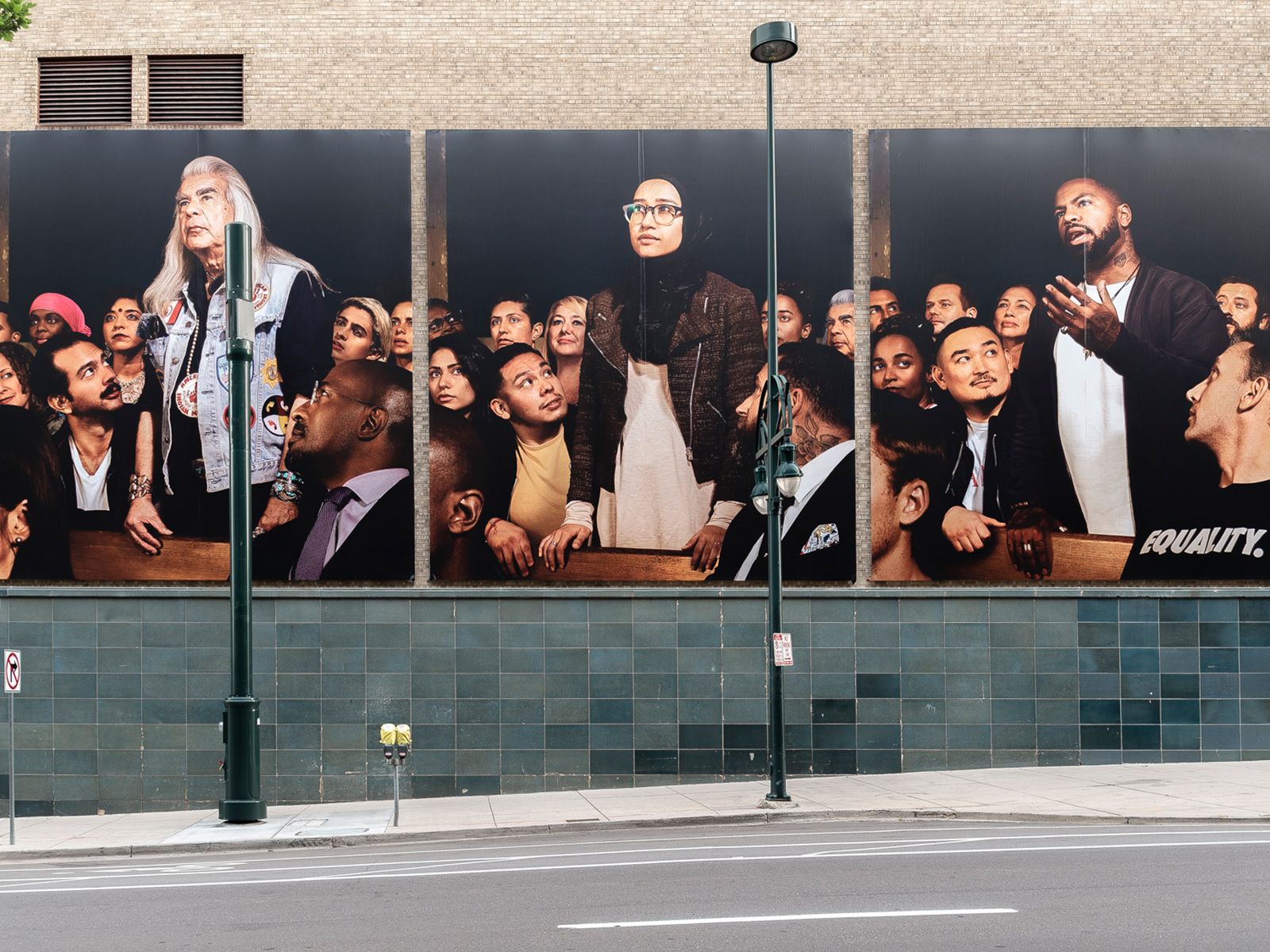The Local newsletter is your free, daily guide to life in Colorado. For locals, by locals.
If you were to design a monument for Denver, what would it be? A crowd of bearded men in puffy jackets drinking IPAs with skis strapped to their backs? A real estate sign that reads “sold for $1 million” in front of a tiny two-bedroom house?
Starting on July 12, Denverites will get the chance to see the monument designs of local artists, as part of a new public art series called Monumental. Produced by Black Cube in collaboration with the Denver Theatre District, the series includes three art installments that raise questions about monuments on local, national, and international levels, as well as a monument-making workshop that’s free and open to the public. The series taps into a larger conversation about who is represented by monuments and adds to Black Cube’s portfolio of exhibitions that tackle timely topics.

“I try to select themes or locations or content, conceptual approaches, that in some way are important for our society to digest,” says Cortney Stell, Black Cube’s executive director and chief curator.
Stell was inspired to consider monuments by a sculpture that her husband, Dmitri Obergfell, made on commission for the Boulder Museum of Contemporary Art. Called “Go Home Bacchus,” the piece is an inverted statue of the Greek god of wine that is sprayed with grape-colored paint to emulate vandalism on monuments that don’t represent the vandal’s values. “It’s a tension between those who erect monuments and those who vandalize them,” Stell says.
The local installation, “Temporary Monuments to Denver,” plants the work of three local artists on a plinth (concrete base) in front of the Colorado Convention Center in the Denver Theatre District downtown. The first work is a two-part project by Nikki Pike, a service artist and instructor of visual art at the University of Colorado–Colorado Springs, whose artwork typically involves collaboration with community members. On July 12, from 4 to 7 p.m., Pike has invited eight local performers to present two- to 10-minute performances on the plinth. Each performer represents a population that, Pike says, monuments typically don’t represent, whether because of ethnic, racial, gender, sexual, or physical identity.
After the final performance, a text-based sculpture that reads, “We the privileged,” will be mounted on the plinth where it will be displayed until late September, when the next work, a salt sculpture by Noah Manos, will take its place.
The wording of Pike’s text sculpture is intended to echo the Constitution. “It’s trying to say that it’s the privileged people who have always chosen what goes down in history, it’s the privileged people who choose what goes up on a pedestal,” Pike says, “and hopefully, it will invite people to think about that.”
A third piece, an archway made by Jaime Carrejo out of border fencing, will be installed in November.
The national installation, “For Freedoms,” is already on display on the back of the Buell Theatre on Champa Street. The billboard features three photographs, each of which imitate the “Freedom of Speech” painting from Norman Rockwell’s “Four Freedoms” series, but with a crowd more representative of the United States’ current population. The installment, along with existing monuments in Civic Center Park, is being used as a writing prompt for groups from Lighthouse Writers Workshop. The resulting written works will be collected with other artist proposals for the “Temporary Monuments” project in MONUMENTAL Zine, a one-time publication that will be launched on August 24 at Understudy, the Denver Theatre District’s arts incubator under the stairs in the Colorado Convention Center.

The final installation, a giant, 24-foot, 3D-printed chicken skeleton by Berlin-based Andreas Greiner, is slated to make its temporary home in the Denver Public Library Central Branch starting in September. The skeleton is modeled after a Ross 308 broiler chicken, a breed which Stell says has been genetically modified to produce more meat and is a “pseudo mascot” for the changes humanity has made on the natural world.
Monuments are typically designed to be permanent installations, but Monumental questions whether or not that makes sense. Cultural values are always changing, so are the people that society considers admirable.
“What if monuments were other things than these bronze permanent things that become forgotten public spaces?” Stell asks. “What if monuments had a more active relationship to the world?”
If you go: “Temporary Monuments to Denver” is opening on July 12, with performances on the plinth in front of the Colorado Convention Center from 4 to 7 p.m. No admission necessary. Find the full Monumental schedule online.








